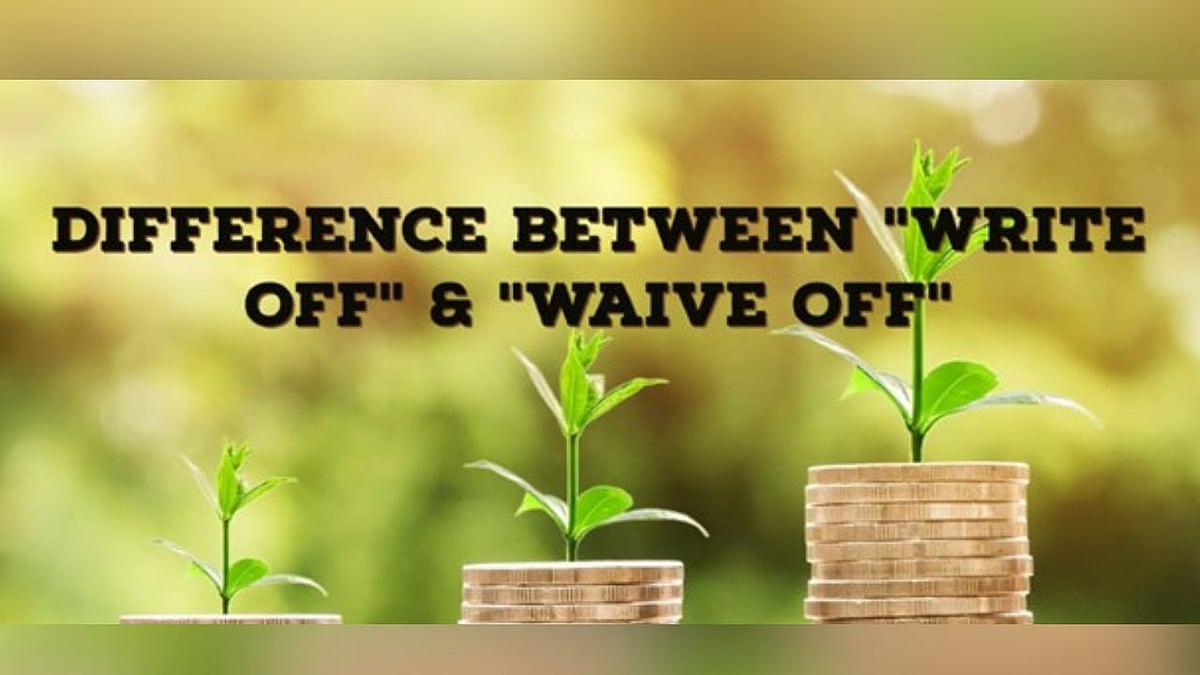Write-Off vs. Waive-Off: Key Differences You Must Know |
In the realm of finance, there are several different terms that are very frequently used at various places. Some of them may look similar at first but represent two entirely different concepts. For example, write-off and loan waive-off are two such terms that are used in the context of loans and create a lot of confusion.
When a borrower fails to pay the loan EMI for more than 90 days, the lending institution declares that particular loan a Non-Performing Asset (NPA). Write-off and waive-off are two different ways to handle such situations. While those with in-depth knowledge of banking and finance may not face any difficulties, some people find it hard to differentiate between these two.
Here’s a detailed explanation of both these terms and how they are different from each other:
What is a loan waive-off?
When a borrower fails to repay the loan and the lender is convinced that there is no way to recover the borrowed amount, the concept of loan waive-off comes into the picture. In this process, the lending institution decided to forgive the debt and release the borrower from any repayment obligations. However, a loan waive-off is done only after conducting thorough research about the individual’s financial condition. Since this results in complete cancellation of the loan, the lender cannot take any legal steps in the future to recover the loan amount.
What is a loan write-off?
While loan write-off is the outcome of a similar situation where the borrower doesn’t repay the loan, it has an entirely different impact on the borrower. As the name suggests, this is a process in which the lender simply cleans up the balance sheets, giving some more time to the borrower for loan repayment. This means the loan account still remains in the books and doesn’t get completely cancelled. The main objective of a loan write-off is to maintain a clean record of NPAs and reduce the tax liability.
In this scenario, the lender often confiscates any collateral that was offered to borrow the amount and auctions it for recovery.
Loan Write-off vs. Loan Waive-off
Here are a few key differences between loan write-off and waive-off:
Outcome
A loan write-off is the process of transferring a loan account to the list of non-performing assets with a future scope of recovery. On the contrary, a loan waive-off means the loan account is cancelled, and the borrower does not need to pay the outstanding debt.
Process
A loan write-off process can be done without any kind of help from the government. But usually lending institutions need the government’s support for loan waive-offs.
Impact on CIBIL Score
A written-off loan can negatively impact the borrower’s credit score, as it reflects the inability to repay the debt. A loan waive-off, on the other hand, may not directly harm the CIBIL score but will be noted in the borrower’s credit history.
How to clear a written-off loan in CIBIL?
When an individual has a written-off loan in a CIBIL report, it means lower creditworthiness. This can not only have a negative impact on the credit score but also affect their eligibility for availing loans in the future. But by paying the outstanding loan amount, this status can be removed from the credit report. For this, the borrower needs to obtain a no-dues certificate from the lender and raise a request with CIBIL.
Final Words
While some people often used these two terms interchangeably, there is a significant difference between write off and waive off. Both these concepts have different outcomes and impact borrowers/lenders in a different way. If you’re planning to apply for a personal loan or have an ongoing loan, understanding this difference is crucial for effective debt management.
